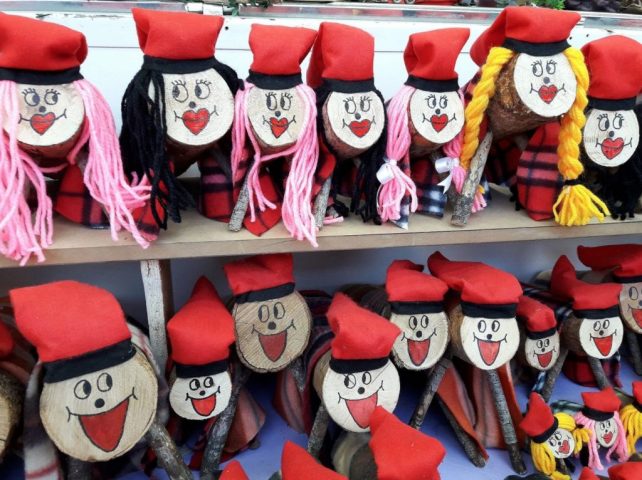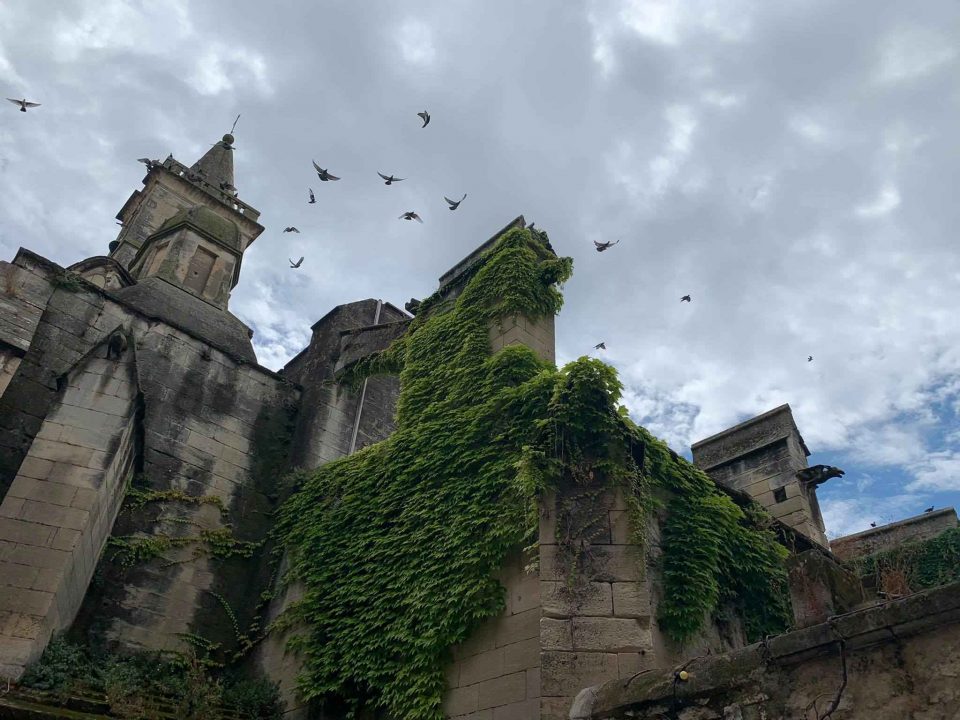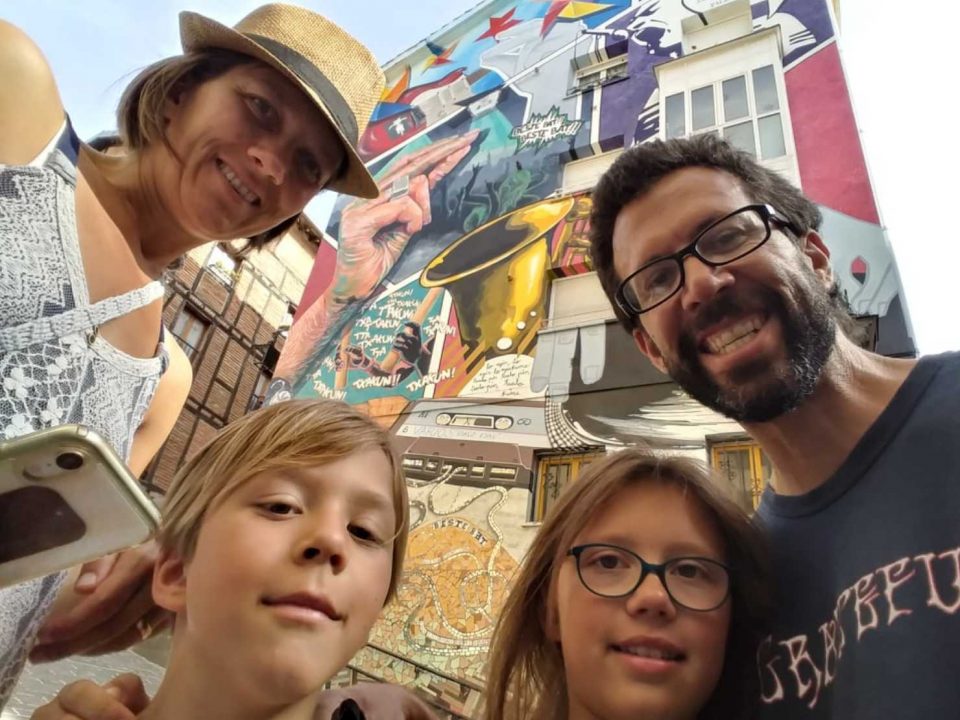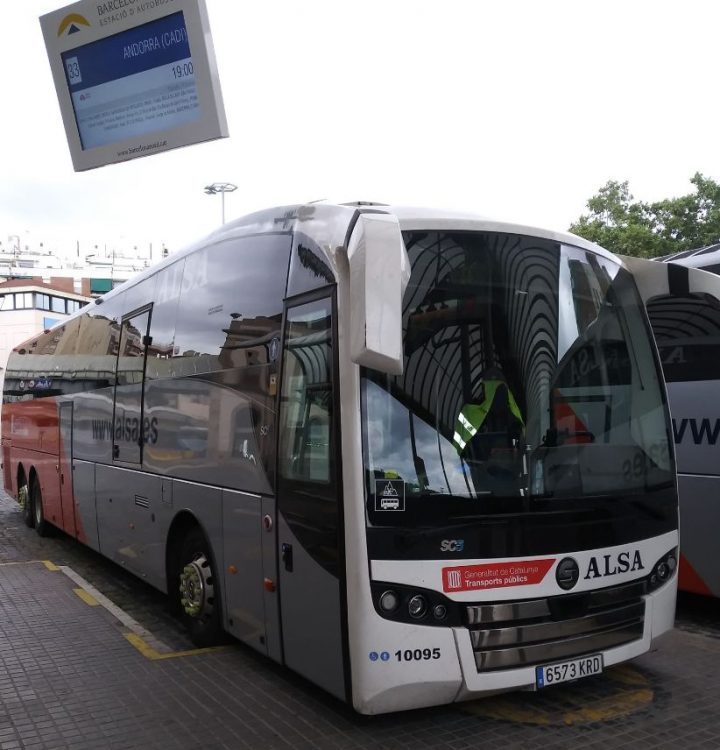
Spanish Immigration: Theater of the ultra absurd
October 31, 2017
We are the champignons: Marinaded mushrooms for any occasion
December 27, 2017The days have shortened, the leaves have turned, and the frost has bitten. In this place with four seasons—which I’m still getting used to—the fourth season stands at the threshold. Father Winter is knocking at the door. It’s the coldest season of the year, and one of the darkest, and yet we celebrate its arrival like no other. It is, throughout the world, a time for holiday cheer, but that cheer can be expressed in so many glorious and bewildering ways.
We kicked off the holidays early, on the fourth Thursday of November. Well, Spaniards might consider it early, although everyone in back in California was celebrating right along with us, as it was Thanksgiving Day. In fact, three of our favorite Californians really were celebrating along with us, for they had flown all the way to Spain to spend three unforgettable weeks with us, here in the mountains of Catalonia.
As for upholding time-honored traditions, you might consider our Thanksgiving dinner an utter disaster, the kind of vile breech of tradition that could make Martha Stewart spill her crumpets. For the love of God, where were the side dishes?! None to be found on our festive dining table. Just one dish, comprised of many layers. But if it’s gastronomic satisfaction you seek, our Thanksgiving lasagna was an all-time success, the kind of thing that could make you want to open a second box of Côte du Rhône.
And now, you can believe, we are ready for anything. And that’s important, because here at Casa Hornaday, we never really know which holidays to celebrate, and when or how. Frankly, as our friends back home can hopefully recall, we have always been pretty big fans of Boxing Day (Dec. 26) and Bastille Day (July 14), but we’ve also tried to uphold the German days of Saint Martin (Nov. 11) and Saint Nikolaus (Dec. 6). We also think it’s important to give a nod to our pagan ancestors, so we keep a special place in our hearts for times like All Hallow’s Day (Nov. 1) and Winter Solstice (Dec. 21), which mark critical points in the cycle of the seasons.
As you can see, the holiday calendar can fill up quickly, leaving hardly a free minute for a partridge or a pear tree. And then, most importantly we have to keep the children informed. Who’s bringing the presents, and when, and maybe—if they’re preternaturally curious—why? Will Santa Claus be coming down the chimney, or should we expect Father Christmas, or maybe even old Kris Kringle? Spoiler alert: the Hornadays expect to be visited by both the German Saint Nikolaus and the American Santa Claus.
Nikolaus, not to be confused with Santa, although they are quite often and easily conflated in the American holiday lore, comes on the night of Dec. 5. But first the children must clean their boots and set them outside the front door for the old saint to inspect. If they meet with his beatific approval, and have been sufficiently cleaned, and if the child has been sufficiently well behaved over the last 12 months, St. Nikolaus will fill the boots with nice treats, like oranges, chocolate coins, and maybe some crayons or a lego truck. And if the child has not been so well behaved, he or she might also find a stick inside one of the boots, a gentle reminder to do your chores and respect your parents. This is a very old German tradition, older than Christianity, but I’ve only been celebrating it since around 2012.
This year we are trying to wrap our mulled wine muffled heads around the regional customs, and indeed, one needs an awfully open mind to embrace the local holiday traditions of Catalonia. You’d think that as a staunchly Catholic country, the people here would observe and uphold the most strictly traditional Christmas rituals. And in some ways they do; the Nativity Scenes take center stage and play a key role in the seasonal decor. But keep in mind, Catalans do not consider themselves Spaniards (despite the steadfast admonitions of General Franco and his loyal disciples).
So now that we are settled here, having spent the better part of the last 14 months in Catalonia, this holiday season, at the risk of committing a tasteless act of cultural misappropriation, we are finally and unapologetically inviting Caga Tió into our home. Some call him the Tió de Nadal, or simply Tió, the log. And not, under any circumstances, should he be confused with the Yule log. This a log of a whole different color, an off-color log, if you will.
About two weeks before Christmas, give or take, and depending on the household, a log appears in the house. The log wears a red scarf or blanket and is painted with a smiling face. It mysteriously arrives, or is carefully placed (again, depending on the household), right next to the fireplace. For the next couple weeks, the log is fed and nurtured. The children put various snacks and treats out each night, and each night the log consumes the treats with gusto. The log generally takes on no change in outward appearance, but by the 24th of December, it is clearly very full and badly needs to relieve itself.
Yes, that’s right, all those snacks and not a single trip to the toilet. So, usually on Christmas Eve or Christmas Day, the family has to go out find a good stick. The log might require a cold stick, or it might need a hot stick. (It will probably take me a few more years to absorb the secret subtle knowledge to determine which log prefers which temperature stick, so stay tuned for that…) And then the real fun begins. Each child, and maybe the parents too, picks up the chosen stick and takes a turn in beating the cheerful log into woeful submission.
As the jovial beating ensues, the log starts to poop. The good news—yes, dear reader, this is the good news you have so patiently waited for—the good news is that the log poops a steaming heap of presents. With each jolly flogging, another gift is defecated. While the children take the stick back outside to get cold again, or point it back into the fire to get hot again, the parents peek under the blanket, where lo and behold, the log has excreted another wonderful package for the family to enjoy.
What is the meaning behind this pooping log? What is the message for our impressionable children? I have no idea, but when in Bar, well, you know what to do.






2 Comments
Enjoyed your post about the Christmas Log! When my family lived in Germany in the mid 60’s Father Christmas would leave a piece of coal in the children’s shoes set outside the door. My kids still remember that and enjoy looking back on the time we lived there.
This risk of finding a lump of coal in your footwear remains a matter of serious concern among children throughout the world!